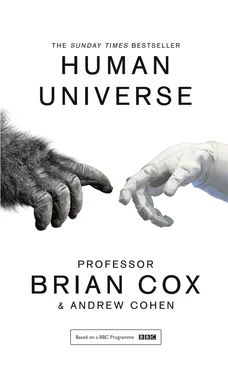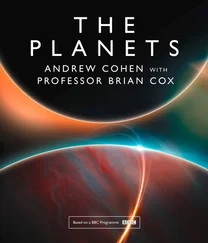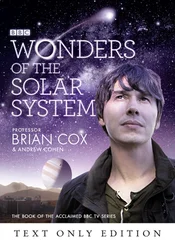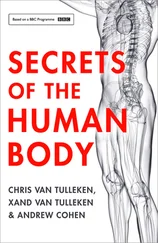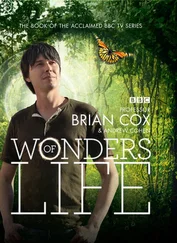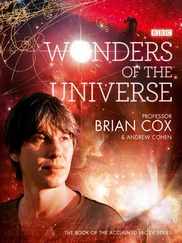Bruno, then, was a complex figure, and his contributions to science are questionable. He was more belligerent free-thinker than proto-scientist, and whilst there is no shame in that, the intellectual origins of our ascent into insignificance lie elsewhere. Bruno was a brash, if portentous, messenger who would likely not have reached his heretical conclusions about an infinite and eternal universe without the work of Nicolaus Copernicus, grounded in what can now clearly be recognised as one of the earliest examples of modern science, and published over half a century before Bruno’s cinematic demise.
OFF CENTRE Off Centre Changing Perspective Outwards to the Milky Way Searching for Patterns in Starlight Beyond the Milky Way The Great Debate The Political Ramifications of Reality, or ‘How to Avoid Getting Locked Up’ The Happiest Thought of My Life A Day Without Yesterday Are We Alone? Science Fact or Fiction? The First Aliens Listen Very Carefully The Golden Voyage Alien Worlds The Recipe for Life Origins A Brief History of Life on Earth A Briefest Moment in Time So, are We Alone? Who are We? Spaceman Apeman Lucy in the Sky From the North Star to the Stars Climate Change in the Rift Valley and Human Evolution ‘An Unprecedented Duel with Nature’ Farming: The Bedrock of Civilisation The Kazak Adventure: Part 1 Intermission: Beyond Memory The Kazak Adventure: Part 2 Why are We Here? A Neat Piece of Logic New Dawn Fades The Rules of the Game Nature’s Fingerprint A Brief History of the Snowflake How the Leopard Got Its Spots A Universe Made for Us? A Day Without Yesterday? What is Our Future? Making the Darkness Visible Sudden Impact Seeing the Future Science Vs. Magic The Wonder of It All Dreamers: Part 1 Dreamers: Part 2 The End Plate Section Credits Picture Section Footnotes Index Acknowledgements About the Authors About the Publisher
Nicolaus Copernicus was born in the Polish city of Torun in 1473 and benefited from a superb education after being enrolled at the University of Cracow at 18 by his influential uncle, the Bishop of Warmia. In 1496, intending to follow in the footsteps of his uncle, Copernicus moved to Bologna to study canon law, where he lodged with an astronomy professor, Domenica Maria de Novara, who had a reputation for questioning the classical works of the ancient Greeks and in particular their widely accepted cosmology.
The classical view of the universe was based on Aristotle’s not unreasonable assertion that the Earth is at the centre of all things, and that everything moves around it. This feels right because we don’t perceive ourselves to be in motion and the Sun, Moon, planets and stars appear to sweep across the sky around us. However, a little careful observation reveals that the situation is in fact more complicated than this. In particular, the planets perform little loops in the sky at certain times of year, reversing their track across the background stars before continuing along their paths through the constellations of the zodiac. This observational fact, which is known as retrograde motion, occurs because we are viewing the planets from a moving vantage point – the Earth – in orbit around the Sun.
This is by far the simplest explanation for the evidence, although it is possible to construct a system capable of predicting the position of the planets months or years ahead and maintain Earth’s unique stationary position at the centre of all things. Such an Earth-centred model was developed by Ptolemy in the second century and published in his most famous work, Almagest . The details are extremely complicated, and aren’t worth describing in detail here because the central idea is totally wrong and we won’t learn anything. The sheer contrived complexity of an Earth-centred description of planetary motions can be seen in Ptolemy’s Model, which shows the apparent motions of the planets against the stars as viewed from Earth. This tangled Ptolemaic system of Earth-centred circular motions, replete with the arcane terminology of epicycles, deferents and equant, was used successfully by astrologers for thousands of years to predict where the planets would be against the constellations of the zodiac – presumably allowing them to write their horoscopes and mislead the gullible citizens of the ancient world. And if all you care about are the predictions themselves, and your philosophical prejudice and common-sense feeling of stillness require the Earth to be at the centre, then everything is fine. And so it remained until Copernicus became sufficiently offended by the sheer ugliness of the Ptolemaic model to do something about it.
Copernicus’s precise objections to Ptolemy are not known, but sometime around 1510 he wrote an unpublished manuscript called the Commentariolus in which he expressed his dissatisfaction with the model. ‘I often considered whether there could perhaps be found a more reasonable arrangement of circles, from which every apparent irregularity would be derived while everything in itself would move uniformly, as is required by the rule of perfect motion.’
The Commentariolus contained a list of radical and mostly correct assertions. Copernicus wrote that the Moon revolves around the Earth, the planets rotate around the Sun, and the distance from the Earth to the Sun is an insignificant fraction of the distance to the stars. He was the first to suggest that the Earth rotates on its axis, and that this rotation is responsible for the daily motion of the Sun and stars across the sky. He also understood that the retrograde motion of the planets is due to the motion of the Earth and not the planets themselves. Copernicus always intended Commentariolus to be the introduction to a much larger work, and included little if any detail about how he had come upon such a radical departure from classical ideas. The full justification for and description of his new cosmology took him a further 20 years, but by 1539 he had finished most of his six-volume De revolutionibus , although the completed books were not published until 1543. They contained the mathematical elaborations of his heliocentric model, an analysis of the precession of the equinoxes, the orbit of the Moon, and a catalogue of the stars, and are rightly regarded as foundational works in the development of modern science. They were widely read in universities across Europe and admired for the accuracy of the astronomical predictions contained within. It is interesting to note, however, that the intellectual turmoil caused by our relegation from the centre of all things still coloured the view of many of the great scientific names of the age. Tycho Brahe, the greatest astronomical observer before the invention of the telescope, referred to Copernicus as a second Ptolemy (which was meant as a compliment), but didn’t accept the Sun-centred solar system model in its entirety, partly because he perceived it to be in contradiction with the Bible, but partly because it does seem obvious that the Earth is at rest. This is not a trivial objection to a Copernican solar system, and a truly modern understanding of precisely what ‘at rest’ and ‘moving’ mean requires Einstein’s theories of relativity – which we will get to later! Even Copernicus himself was clear that the Sun still rested at the centre of the universe. But as the seventeenth century wore on, precision observations greatly improved due to the invention of the telescope and an increasingly mature application of mathematics to describe the data, and led a host of astronomers and mathematicians – including Johannes Kepler, Galileo and ultimately Isaac Newton – towards an understanding of the workings of the solar system. This theory is good enough even today to send space probes to the outer planets with absolute precision.
At first sight it is difficult to understand why Ptolemy’s contrived mess lasted so long, but there is a modern bias to this statement that is revealing. Today, a scientifically literate person assumes that there is a real, predictable universe beyond Earth that operates according to laws of nature – the same laws that objects obey here on Earth. This idea, which is correct, only emerged fully formed with the work of Isaac Newton in the 1680s, over a century after Copernicus. Ancient astronomers were interested primarily in predictions, and although the nature of physical reality was debated, the central scientific idea of universal laws of physics had simply not been discovered. Ptolemy created a model that makes predictions that agree with observation to a reasonable level of accuracy, and that was good enough for most people. There had been notable dissenting voices, of course – the history of ideas is never linear. Epicurus, writing around 300 BCE, proposed an eternal cosmos populated by an infinity of worlds, and around the same time Aristarchus proposed a Sun-centred universe about which the Earth and planets orbit. There was also a strong tradition of classic orthodoxy in the Islamic world in the tenth and eleventh centuries. The astronomer and mathematician Ibn al-Haytham pointed out that, whilst Ptolemy’s model had predictive power, the motions of the planets as shown in the figure here
represent ‘an arrangement that is impossible to exist’.
Читать дальше
